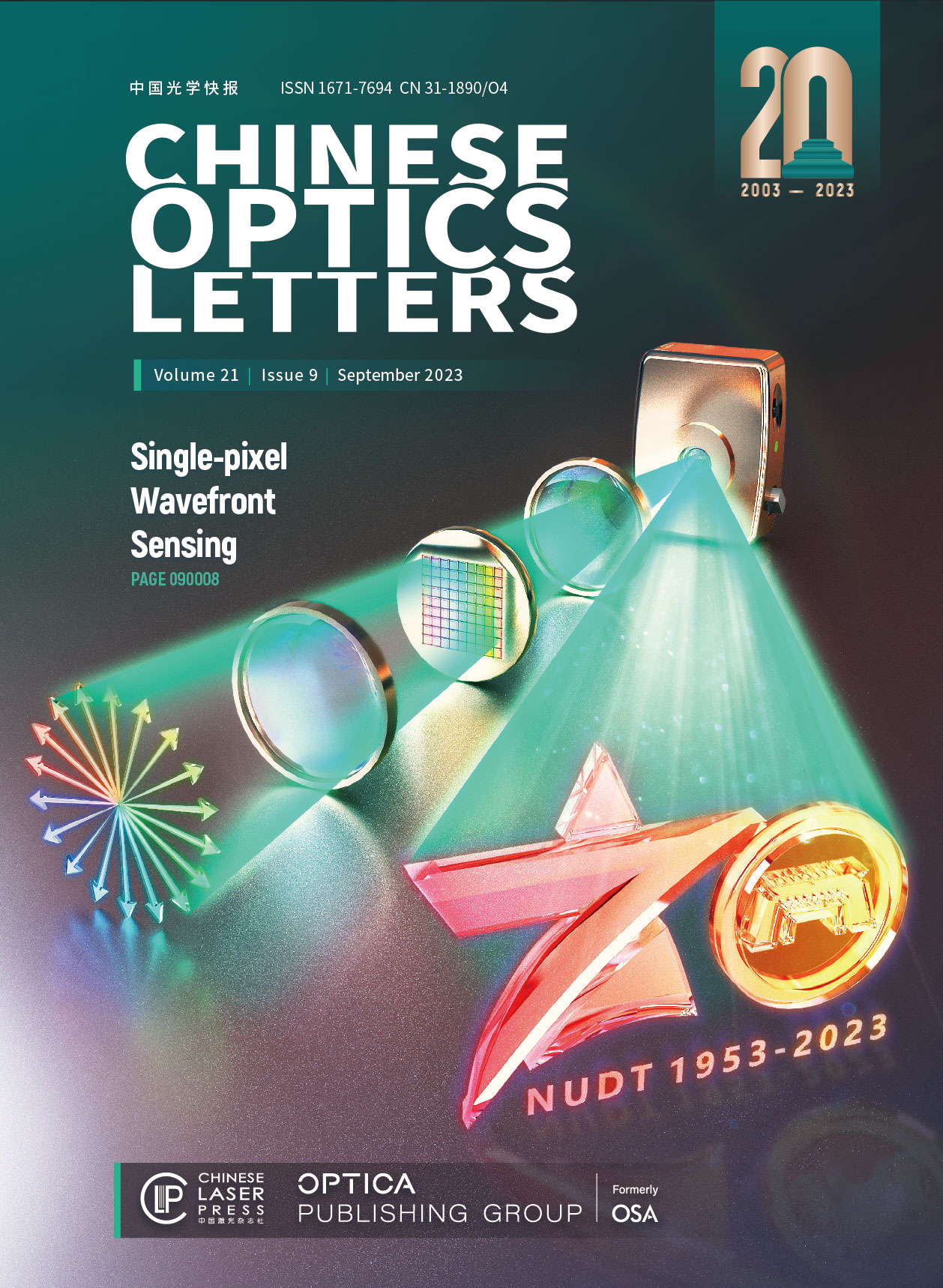Journals >Chinese Optics Letters
- Publication Date: Aug. 14, 2023
- Vol. 21, Issue 9, 090501 (2023)
- Publication Date: Aug. 22, 2023
- Vol. 21, Issue 9, 091301 (2023)
- Publication Date: Aug. 21, 2023
- Vol. 21, Issue 9, 091401 (2023)
- Publication Date: Aug. 22, 2023
- Vol. 21, Issue 9, 091402 (2023)
- Publication Date: Aug. 21, 2023
- Vol. 21, Issue 9, 091403 (2023)
- Publication Date: Aug. 23, 2023
- Vol. 21, Issue 9, 093801 (2023)
- Publication Date: Aug. 21, 2023
- Vol. 21, Issue 9, 093601 (2023)
- Publication Date: Aug. 22, 2023
- Vol. 21, Issue 9, 092501 (2023)
- Publication Date: Aug. 15, 2023
- Vol. 21, Issue 9, 092701 (2023)
- Publication Date: Aug. 18, 2023
- Vol. 21, Issue 9, 092702 (2023)
- Publication Date: Sep. 15, 2023
- Vol. 21, Issue 9, 090001 (2023)
- Publication Date: Aug. 14, 2023
- Vol. 21, Issue 9, 090002 (2023)
- Publication Date: Aug. 23, 2023
- Vol. 21, Issue 9, 090003 (2023)
- Publication Date: Aug. 18, 2023
- Vol. 21, Issue 9, 090004 (2023)
- Publication Date: Sep. 15, 2023
- Vol. 21, Issue 9, 090005 (2023)
- Publication Date: Sep. 15, 2023
- Vol. 21, Issue 9, 090006 (2023)
In the aerospace field, for aerospace engines and other high-end manufacturing equipment working in extreme environments, like ultrahigh temperatures, high pressure, and high-speed airflow, in situ temperature measurement is of great importance for improving the structure design and achieving the health monitoring and the fault diagnosis of critical parts. Optical fiber sensors have the advantages of small size, easy design, corrosion resistance, anti-electromagnetic interference, and the ability to achieve distributed or quasi-distributed sensing and have broad application prospects for temperature sensing in extreme environments. In this review, first, we introduce the current research status of fiber Bragg grating-type and Fabry–Perot interferometer-type high-temperature sensors. Then we review the optical fiber high-temperature sensor encapsulation techniques, including tubular encapsulation, substrate encapsulation, and metal-embedded encapsulation, and discuss the extreme environmental adaptability of different encapsulation structures. Finally, the critical technological issues that need to be solved for the application of optical fiber sensors in extreme environments are discussed.
.- Publication Date: Sep. 21, 2023
- Vol. 21, Issue 9, 090007 (2023)
- Publication Date: Sep. 19, 2023
- Vol. 21, Issue 9, 090008 (2023)












